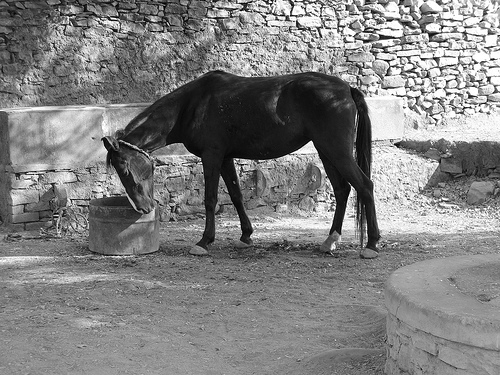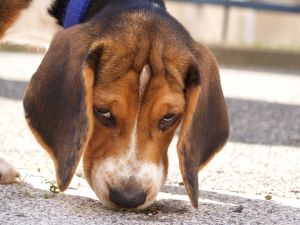Marwari Horse
Also known as the Malani, the Marwari Horse is a rare horse breed from Marwar (also known as Jodhpur) in India. It is thought that it was descended from native Indian ponies that were crossed with Arabian horses and possibly Mongolian horses as well. This horse is known for 2 distinctive features. It has inward-turning ear tips and a natural ambling gait.
The Marwari Horse was first bred by the Rathores who were the traditional rulers of the Marwar region which is in western India. The Rathores were strict in breeding and promoted this horse for its purity and hardiness since the start of the 12th century. It has been used throughout history as a cavalry horse and was famous for its bravery and loyalty during battle. Sadly, the breed deteriorated in the 1930’s due to poor management practices. Fortunately, today it has regained back some of its popularity. It now is used for agricultural and light draught work, as well as for riding and packing. In 1995, a breeding society formed for the Marwari Horse in India, and since the 2000s, Marwari Horses have been exported to Europe and the USA.
This horse ranges from about 152 to 163 cm tall. However, Marwari horse that originate from different parts of India have actually been found to be of different heights, as they can range from 142 to 173 cm tall. Its colour is usually skewbald, piebald, palomino, chestnut, grey, or bay. White horses are bred specifically for religious use in India, however they are actually not accepted into stud books. Grey Marwari horses are considered to be an auspicious sign and are therefore the most valuable. Skewbald and piebald horses are the second-most favoured colours. Black horses are considered unlucky as black is a symbol of darkness and death. Horses with white markings of 4 white socks and a blaze are considered as a lucky sign.
As mentioned above, the Marwari Horses’ ears are pointy with inward turning tips. Its neck is slender, it has a deep chest, and straight shoulders. Their legs are slender and its hooves are small. It also has a natural ambling gait that is close to a pace. These horses are hardy but easy to keep. However, some can be quite tenacious and have an unpredictable temperament.




